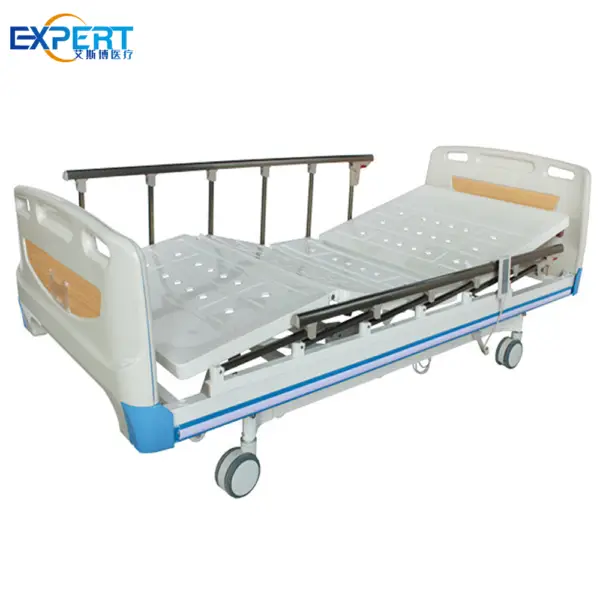Adresse
304, rue Cardinal Nord
Centre Dorchester, MA 02124
Heures de travail
Du lundi au vendredi : 7h - 19h
Week-end : 10h - 17h
Bienvenue sur mon blog !
Avant de plonger dans le contenu, si vous êtes intéressé par nos produits ou si vous avez des questions, n'hésitez pas à visiter notre Nous contacter sur notre site web. Notre équipe est à votre disposition pour répondre à vos questions, passer vos commandes ou vous apporter toute l'assistance dont vous pourriez avoir besoin.
Commençons maintenant notre voyage ensemble. J'espère que vous trouverez ce contenu instructif, captivant et utile.
Il est essentiel que les prestataires de soins de santé, les administrateurs d'hôpitaux et les patients comprennent quelles sont les dimensions standard d'un lit d'hôpital. Les lits d'hôpital sont des équipements médicaux spécialisés conçus pour assurer le confort, la sécurité et l'accessibilité des patients tout en prodiguant des soins essentiels. Les dimensions de ces lits varient en fonction de leur conception, de leur fonction et des besoins spécifiques des patients. Dans ce blog, nous explorerons les mesures standard des lits d'hôpital, les facteurs influençant leurs dimensions et comment choisir le bon lit pour vos besoins.

When selecting a hospital bed, understanding the standard measurements of a hospital bed helps ensure that the bed fits well within the designated space and meets patient care requirements. Properly sized hospital beds can facilitate better patient management, enhance comfort, and improve overall patient outcomes. Let’s delve into the typical measurements of various types of hospital beds.
The standard measurements of hospital beds vary based on the type and intended use. Here are the most common dimensions:
For pediatric patients, hospital beds are smaller to accommodate children’s needs. Here are the standard measurements:
Bariatric hospital beds are designed for larger patients and have larger dimensions:
Specialty hospital beds, such as those for long-term care or rehabilitation, may have unique measurements:









Understanding what are the standard measurements of a hospital bed requires knowledge of the factors that influence these dimensions. Several aspects must be considered when determining the appropriate bed size:
Patients come in various sizes and have different medical conditions that may require specialized beds. For example, bariatric patients require wider beds to support their weight.
The available space in a hospital room or home care setting is a crucial factor. Hospital beds should fit comfortably within the room, allowing sufficient space for healthcare professionals to maneuver.
Different types of hospital beds come with various features, such as adjustable heights, Trendelenburg positions, and built-in safety rails. The complexity of these features can influence the bed’s overall dimensions.
The type of care a patient requires can dictate bed measurements. For instance, patients needing extensive rehabilitation may benefit from wider beds with additional support features.
Healthcare regulations often dictate certain measurements for hospital beds to ensure patient safety. Compliance with these standards is essential for medical facilities.
Here’s a table summarizing the standard measurements of different types of hospital beds:
| Type de lit | Longueur (pouces) | Largeur (pouces) | Height (inches) |
|---|---|---|---|
| Lit d'hôpital standard | 80 – 84 | 36 – 40 | 15 – 25 |
| Lit d'hôpital pédiatrique | 60 | 30 – 36 | 10 – 20 |
| Lit d'hôpital bariatrique | 80 – 88 | 42 – 54 | 15 – 30 |
| Lit d'hôpital spécialisé | 80 – 86 | 36 – 48 | 15 – 28 |

When considering what are the standard measurements of a hospital bed, it’s essential to choose the right bed that meets both patient and caregiver needs. Here are some tips:
Evaluate the patient’s size, medical condition, and mobility. For example, patients who are bedridden may require specialized beds with additional features.
Whether the bed will be used in a hospital, rehabilitation center, or home care setting, the environment can influence the type of bed you choose.
Many hospital beds offer adjustable height and position features. Look for beds that can be easily adjusted to meet the specific care needs of the patient.
Make sure the hospital bed complies with safety and quality standards set by regulatory bodies. This ensures that the bed is safe for both patients and caregivers.
In summary, knowing what are the standard measurements of a hospital bed is vital for making informed decisions about patient care. By understanding the different types of hospital beds and their respective dimensions, healthcare providers can ensure that they select the most appropriate bed for their patients’ needs. Properly sized hospital beds contribute to patient comfort, safety, and enhanced care, ultimately leading to better health outcomes.
The standard measurements of a hospital bed typically range from 80 to 84 inches in length, 36 to 40 inches in width, and 15 to 25 inches in height.
Yes, pediatric hospital beds are generally smaller, measuring around 60 inches in length and 30 to 36 inches in width. Bariatric hospital beds are larger, measuring between 80 to 88 inches in length and 42 to 54 inches in width.
Consider the patient’s size, medical condition, care environment, and any special features needed, such as adjustability or safety measures, when selecting a hospital bed.
Factors include patient size and condition, available room space, bed functionality, type of care provided, and safety and compliance standards.
Yes, compliance with safety and quality standards is essential to ensure that the hospital bed is safe for both patients and caregivers.
